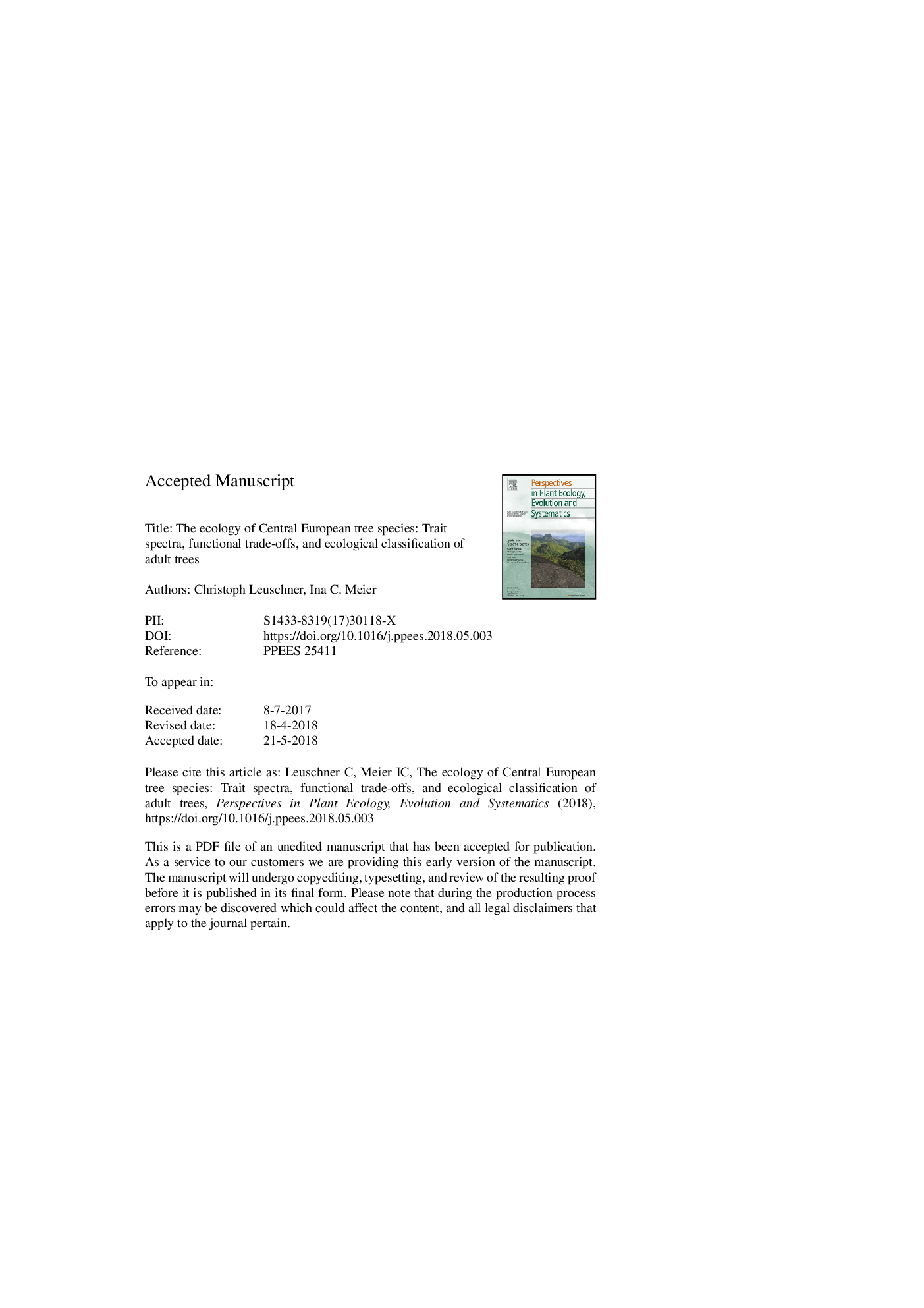| کد مقاله | کد نشریه | سال انتشار | مقاله انگلیسی | نسخه تمام متن |
|---|---|---|---|---|
| 8849494 | 1618587 | 2018 | 50 صفحه PDF | دانلود رایگان |
عنوان انگلیسی مقاله ISI
The ecology of Central European tree species: Trait spectra, functional trade-offs, and ecological classification of adult trees
ترجمه فارسی عنوان
اکولوژی گونه های درختی مرکزی اروپا: طیف صفات، ترکیبات عملکردی و طبقه بندی اکولوژیکی درختان بالغ
دانلود مقاله + سفارش ترجمه
دانلود مقاله ISI انگلیسی
رایگان برای ایرانیان
کلمات کلیدی
درختان بالغ، جانشینی جنگل، سیگنال فیلوژنتیک، صفات برگ صفات ریشه، تحمل استرس،
موضوعات مرتبط
علوم زیستی و بیوفناوری
علوم کشاورزی و بیولوژیک
بوم شناسی، تکامل، رفتار و سامانه شناسی
چکیده انگلیسی
Plant functional traits offer insights into the plant-environment relationship and may help to understand how plants influence ecosystem functions. Applying trait-based models on climate and land-use change to forests is often hindered by poor data quality, as many data are estimates and traits are often parameterized for juvenile and not adult trees. For advancing theory building and improving the quality of trait data with relevance for adult trees, we compiled a unique trait database for the complete tree flora of Central Europe (42 species from 11 families), covering 38 morphological and physiological traits mostly parameterized with sun and shade crown and root data from adult trees. Despite only small variation in climate, several traits vary largely in this tree species sample, likely reflecting regional edaphic variation, while the influence of phylogenetic diversity is low and restricted to the angiosperm-gymnosperm divergence. The well-established shade tolerance-drought tolerance and wood density-drought sensitivity trade-offs are not supported by our data set, possibly due to the explicit consideration of adult trees and the absence of extended climatic gradients. For the 11 major tree species with high information density, a principal components analysis (PCA) identified three key functional traits, (i) minimum light demand of the adult trees' shade leaves, (ii) stand leaf area index (LAI), and (iii) maximum tree height, which allows distinguishing five tree functional groups, among them a mid-successional tree group. Only a small minority of traits changes significantly along the early-to-late successional axis, contradicting a main paradigm in forest succession research. The functional contrast between early- and late-successional trees is smaller in the sun canopy of adults than in seedlings or saplings, suggesting that trait data from juveniles cannot simply be extrapolated to adults. Focusing on adult trees and on traits with a more direct link to the underlying processes may significantly improve tree functional classification and trait-based models in forest ecology and biogeochemistry.
ناشر
Database: Elsevier - ScienceDirect (ساینس دایرکت)
Journal: Perspectives in Plant Ecology, Evolution and Systematics - Volume 33, August 2018, Pages 89-103
Journal: Perspectives in Plant Ecology, Evolution and Systematics - Volume 33, August 2018, Pages 89-103
نویسندگان
Christoph Leuschner, Ina C. Meier,
